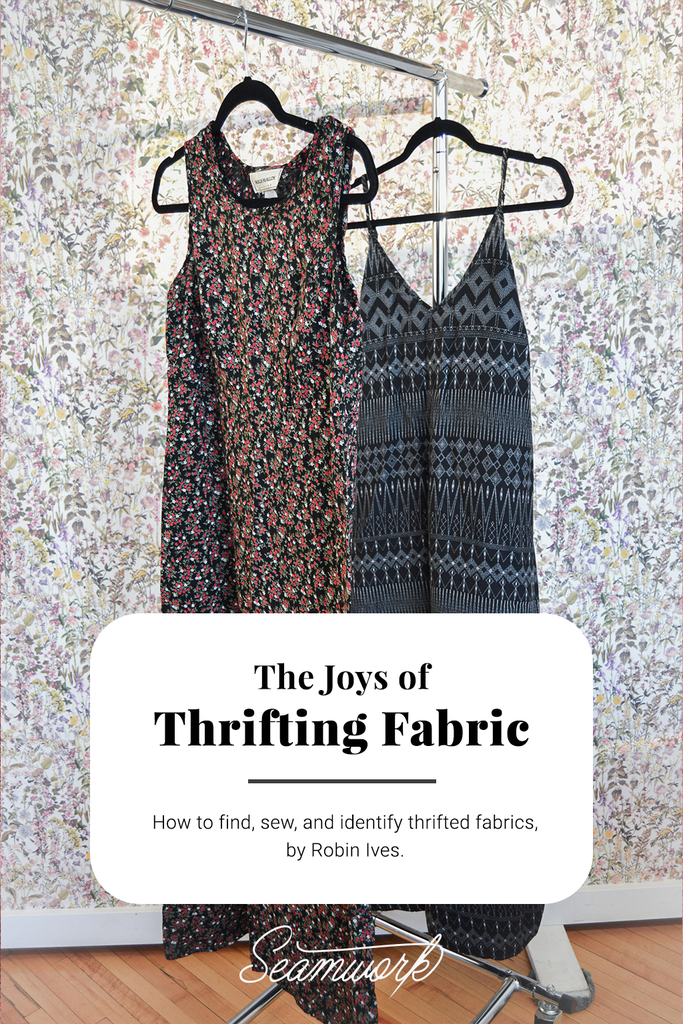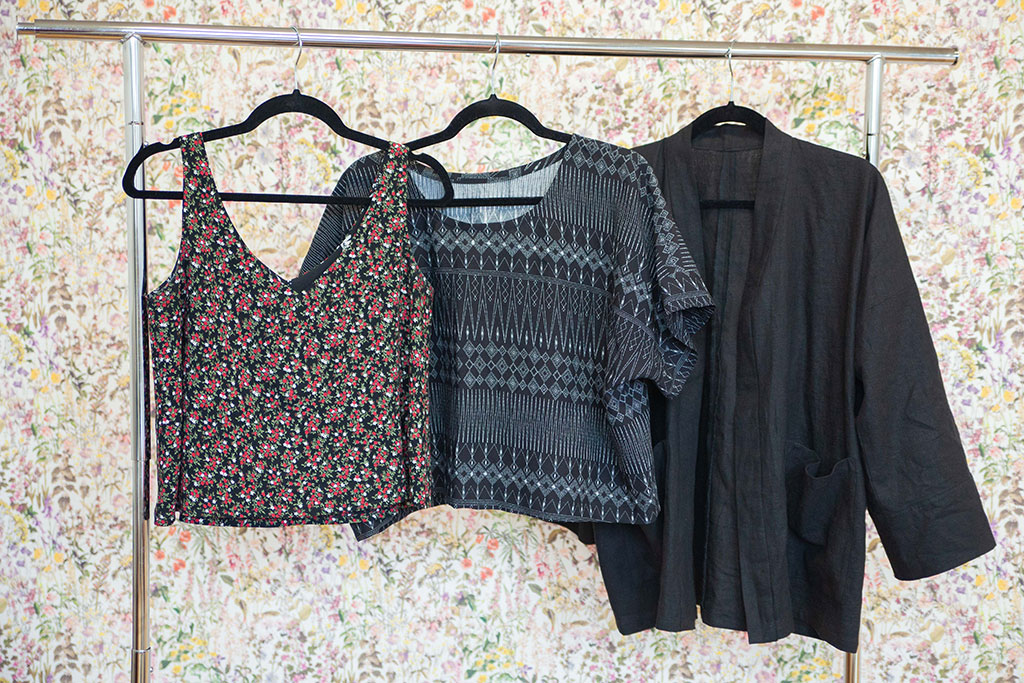
It's a new year and a new decade—do you make resolutions? There seems to be two camps of people: those who make New Year's resolutions, and those who feel that if it is an important change there's no need to wait for the new year to make it. I'm a regular visitor to both camps. I don't wait for special events or anniversaries to make meaningful changes (I started meditating just last month!), but I also love the idea of starting a new year with some positive updates that will hopefully lead to a simpler, happier, and healthier lifestyle.
A new year, a new way to stash
Let's talk about fabric stashes. Almost every sewist I know has one. I've got one. Some would argue I have more than one. Sewists as a breed tend to have a habit of buying and collecting fabric. You've heard the adage—sewing and buying fabric are two different hobbies. This resolution isn't about shopping your stash, although, of course, we recommend it—the most sustainable fabric is the fabric you already own. No, this resolution is about revisiting our buying habits. It is about thrifting fabric!
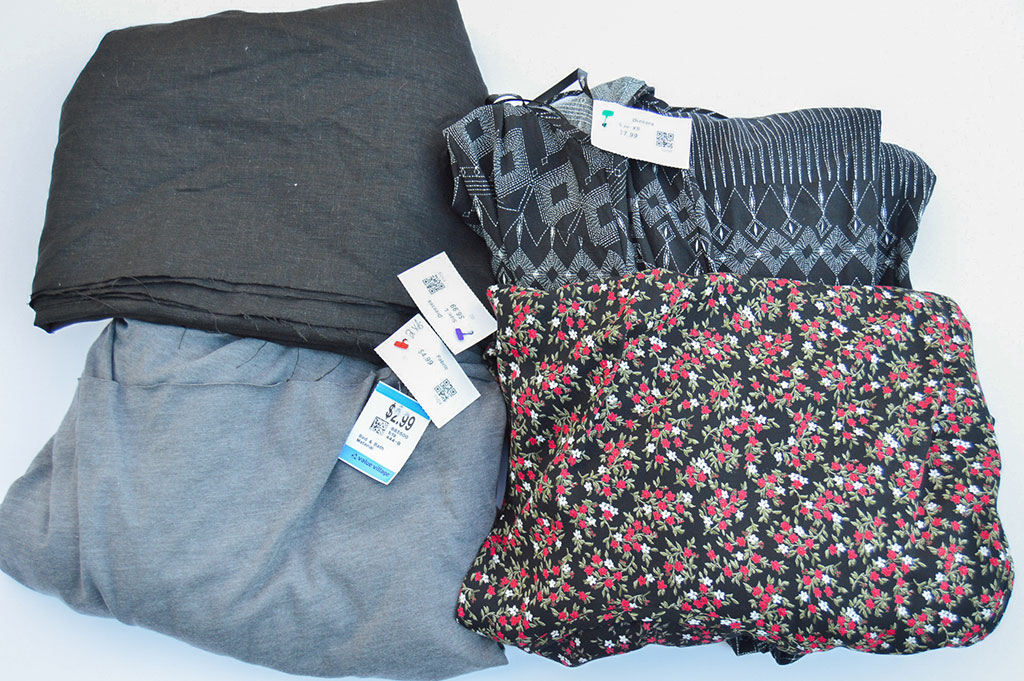
You've heard of it. You may have a friend that does it. You almost assuredly follow someone on social media that does it. If you haven't tried it yet, now is the time, and we're going to walk you through it. It doesn't just save money, and it doesn't just help save the earth—it is really fun! There is an internal thrill from finding an amazing piece of fabric at a steal of a price and then turning it into a brand new piece of clothing. This is the trifecta of New Year's resolutions. It increases sustainability, is gentle on your budget, and improves mental health by allowing you to practice creativity both while thrifting AND by creating something new for your closet.
How to start thrifting fabric
So, where do you start? There are many different places you can thrift fabric. Your local second-hand store is the most obvious. This could be the Salvation Army, Goodwill, Value Village, or your neighborhood second-hand store, to name a few. Many of these companies have online stores as well, with both Buy It Now features and auctions. Speaking of online sources, have you heard of A Thrifty Notion? It is an online sewing thrift shop with a brick and mortar in Manhattan, Kansas.
Another source online is Fabscrap. Fabscrap works with designers in New York to recycle and resell deadstock and leftover fabric pieces. They have designer fabrics by the yard, in scrap packs, and in yard packs, which include 3-5 cuts of 3/4 to 2-yard pieces curated by color—perfect for your Design Your Wardrobe collection! Fabscrap even has a small collection of trims available in their shop.
Many cities have scrap stores that carry fabric, patterns, and notions, as well as all kinds of art supplies. Here in Portland, we have Scrap PDX, the flagship of the Scrap Creative Reuse Network with locations in Denton, Texas; Arcata, California; Richmond, Virginia; Ann Arbor, Michigan; and Baltimore, Maryland. Scrap is a non-profit organization that has diverted tons of usable fabric and art materials from landfills.
So where else can you thrift fabric? Try Craigslist, Freecycle, Nextdoor, and Facebook Marketplace. Yard sales and estate sales are great places to find usable fabric, but not always in the form of cut yards. Sheets and curtains will yield large pieces of fabric. Consider fabric shower curtains or a slipcover from a couch or chair could live a second life as a tote bag or backpack.
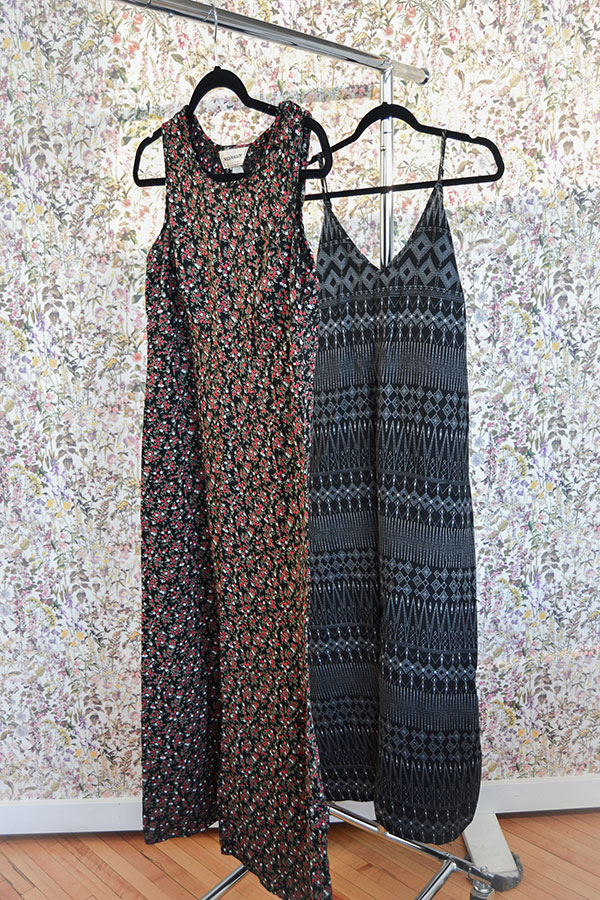
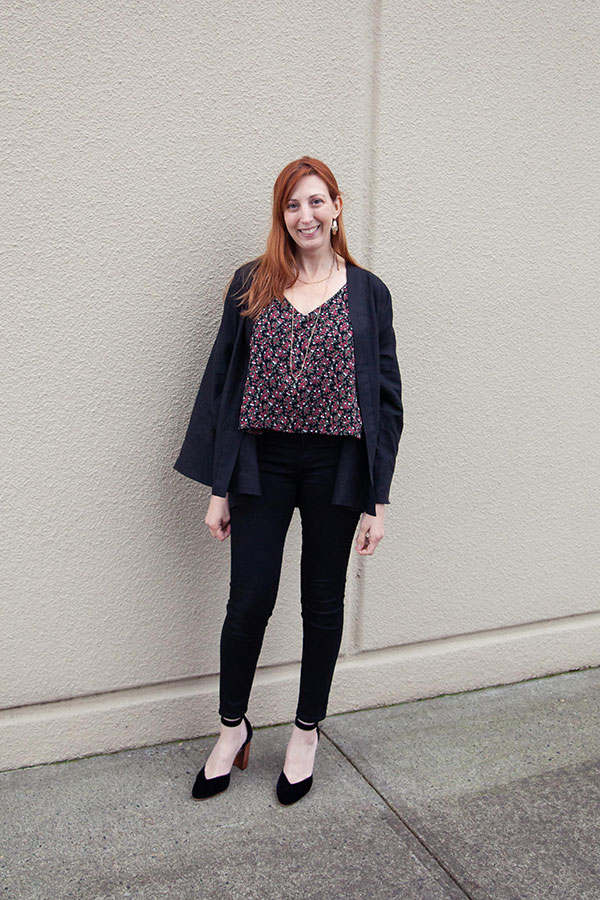
You don't only have to look for large pieces of fabric, though—other items of ready to wear clothing can be thrifted and upcycled. When I say other clothing, I am not talking about purchasing plus size clothing if you do not wear plus size clothing. Why not? Plus size clothing can be hard to find, especially at a good price, and it should be purchased by people who will wear it. Here and here are blog posts that discuss why.
That being said, there are other items of clothing you can mine for fabric or alterations! My rule of thumb is to never go more than two sizes larger than what I am. Dresses can be turned into skirts, several pairs of jeans can make a really fun patchwork (Audrey, anyone?), a tote bag can be crafted from a coat, a skirt can become a top or camisole, and adult clothes can be turned into children's pieces.
My thrift scores
On a mild, sunny day in November, I visited two local thrift stores—Goodwill and Value Village. I scored a 2 yard cut of black linen for $5. With some creative cutting, I was able to squeak a Seamwork Quince out of it.
I also found a 1 3/4 yard of a light grey jersey for $3! I was hoping to find a bed sheet with a lovely little ditzy floral for a Seamwork Clarke, but it wasn't meant to be. Instead, I found this maxi dress ($6.99) with a print that fits the bill perfectly. I also found another maxi dress ($7.99) with a faux sashiko print and made a Seamwork Bo.
It's a good idea to have a list of some patterns with various yardage requirements and types of fabrics so that you have a jumping-off point for what to search for. If you don't see a section with cuts of fabric or sewing supplies, ask a clerk if they have one. Some stores keep them with the linens, and some stores simply have a box in a back room.
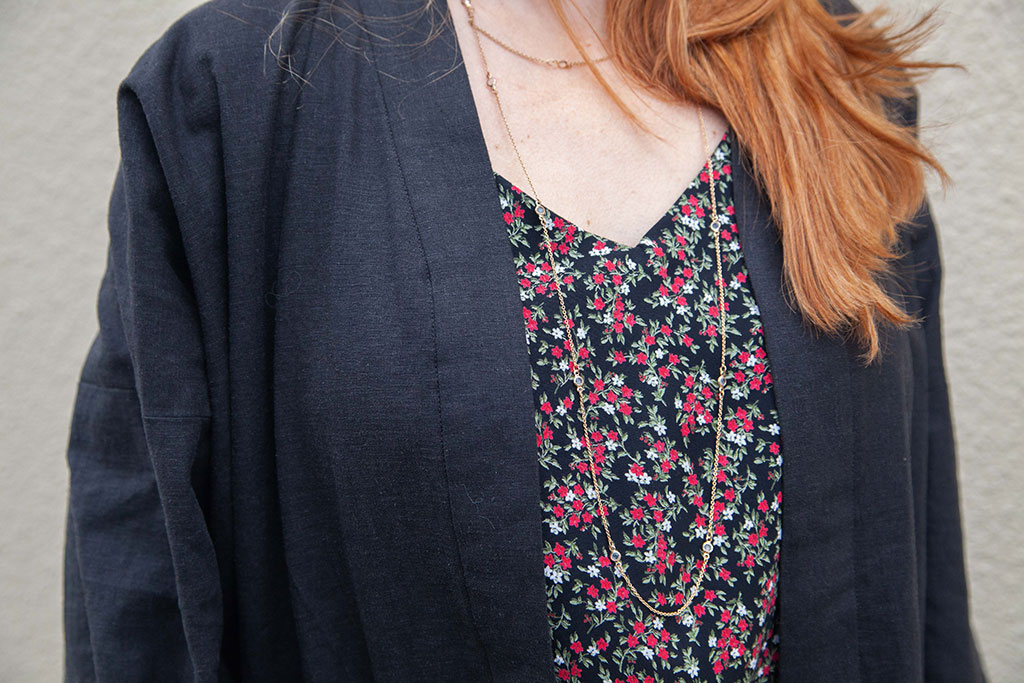
The best tip I received was to be patient. You won't find something at every store or website you look at, but that's okay because it's the new year and we're not buying things we don't need (wink, wink), right?
How to identify mystery fabric
So you've waded through the racks and brought home some really great finds, but what exactly are they? If they are ready-to-wear garments, sheets, curtains, or tablecloths, look for a content tag and washing instructions.
If there isn't a tag and you can't tell from hand feel, you have a couple of options. You could bring it to your local fabric store and compare it to some other fabrics on the shelves. Your other option is to do a burn test on it.
How to do a burn test
Burn tests should always be done in well-ventilated areas over an empty sink, large ashtray, or metal container—do NOT perform a burn test over anything plastic or any kind of other fiber, like rugs or towels. Make sure pets and children are not nearby. Don't do it if you have a cold or any sinus problems—you need to be able to smell the odor coming from your burn test.
For the same reason, don't use matches or refillable lighters—both put off strong odors when lit—so use a disposable lighter or a small tealight or unscented candle.
Your testing fabric should be cut in a small piece, about 1 - 2" squared, and you should always hold the fabric with a pair of tweezers to test it.
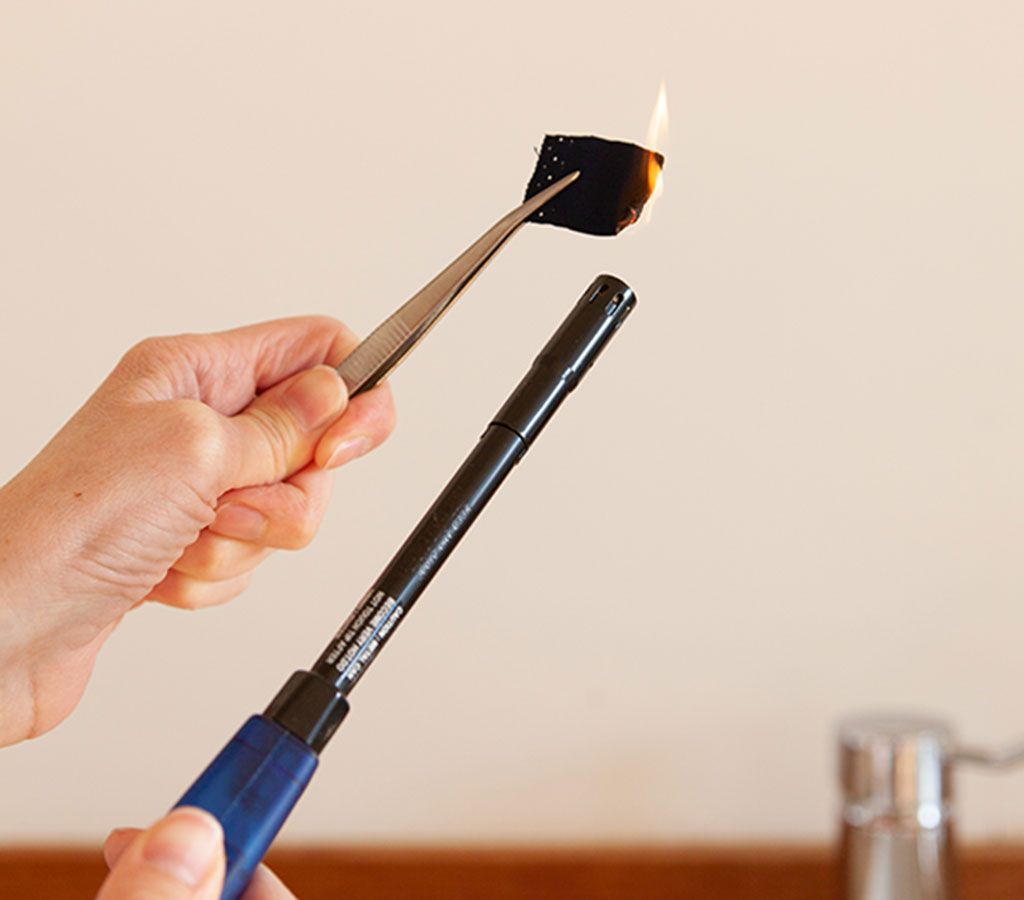
Position your fabric with the tweezers and slowly bring it to the flame. Note how it reacts—does it shrink away from the flame? What happens when you remove it from the flame? What does it smell like when burning? What is the ash like?
Cellulose fibers: Cotton, linen, and hemp, for example, will smell like paper when burned and have an afterglow after the flame extinguishes. The ash will be light greyish white and crumble like dust.
Protein fibers: Silk and wool, for example, will smell like burning hair. The ashes will be darker and brittle. They will still crumble, but not as easily as cellulose fibers.
Synthetic fibers: Polyester, acetate, nylon, and acrylic, for example, will shrink away from the flame. They will have a dark plume of smoke when burning and have a chemical or plastic smell. They will extinguish quickly when removed from the flame and bead up and have a hard, uncrushable ash.
Something to consider is that many fabrics are blends or have chemical finishes on them that will alter the results of your burn test. You may not get a reliable result even after a few attempts. There is much information on the web about specific types of fabric and what to expect when burned. Do your research before starting any burn test and take notes about the key points you want to look for. Have a friend take a cellphone video, at a safe distance, of course. That way, if you miss anything, you can watch and add to your notes.
Knowing the fiber content will help you choose how to wash your fabric find, but what do you do if it's still unidentifiable after a fabric store trip and a burn test?
You can wash a small swatch to see how it handles water temperature and dryer or iron heat. Or, you can simply wash it in cold and hang it to dry.
I like to consider how I wash the bulk of my laundry, which is with warm water, then tumble dried on low. Ultimately this is how laundry gets done in my busy household and probably what would happen to my sewn garments, so that is how I washed my thrifted finds.
Have you thrifted fabric before? Where did you find it? What did you make? Head over to the Seamwork Community and share your story!


